
Punjab is a geopolitical, cultural, and historical region in South Asia. It is specifically located in the northwestern part of the Indian subcontinent, comprising areas of modern-day eastern-Pakistan and northwestern-India. Punjab's major cities are Lahore, Faisalabad, Rawalpindi, Gujranwala, Multan, Ludhiana, Amritsar, Sialkot, Chandigarh, Shimla, Jalandhar, Patiala, Gurugram, and Bahawalpur.

Gujranwala is a city and capital of Gujranwala Division located in Pakistan. It is also known as "City of Wrestlers" and is quite famous for its food. It is the 5th most populous city proper after Karachi, Lahore, Faisalabad and Rawalpindi respectively. Founded in the 18th century, Gujranwala is a relatively modern town compared to the many nearby millennia-old cities of northern Punjab. The city served as the capital of the Sukerchakia Misl state between 1763 and 1799, and is the birthplace of the founder of the Sikh Empire, Maharaja Ranjit Singh.

Amritsar, historically also known as Rāmdāspur and colloquially as Ambarsar, is the second-largest city in the Indian state of Punjab, after Ludhiana. It is a major cultural, transportation and economic centre, located in the Majha region of Punjab. The city is the administrative headquarters of the Amritsar district. It is situated 217 km (135 mi) north-west of Chandigarh, and 455 km (283 mi) north-west of New Delhi. It is 28 km (17.4 mi) from the India-Pakistan border, and 47 km (29 mi) north-east of Lahore, Pakistan.
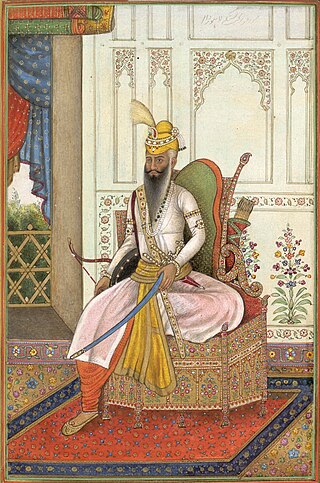
Ranjit Singh, popularly known as Sher-e-Punjab or "Lion of Punjab", was the first Maharaja of the Sikh Empire, which ruled the northwest Indian subcontinent in the early half of the 19th century. He survived smallpox in infancy but lost sight in his left eye. He fought his first battle alongside his father at age 10. After his father died around Ranjit's early teenage years, Ranjit subsequently fought several wars to expel the Afghans throughout his teenage years. At the age of 21, he was proclaimed the "Maharaja of Punjab". His empire grew in the Punjab region under his leadership through 1839.
The Punjabis, are an Indo-Aryan ethnolinguistic group associated with the Punjab region, comprising areas of eastern Pakistan and northwestern India. They generally speak Standard Punjabi or various Punjabi dialects on both sides.

Manmohan Singh is an Indian retired politician, economist, academician and bureaucrat who served as the 13th Prime Minister of India from 2004 to 2014. He is the third longest-serving prime minister after Jawaharlal Nehru and Indira Gandhi. A member of the Indian National Congress, Singh was the first Sikh prime minister of India. He was also the first prime minister since Jawaharlal Nehru to be re-elected after completing a full five-year term.

The Punjabi Suba movement was a long-drawn political agitation, launched by Punjabi speaking people demanding the creation of autonomous Punjabi Suba, or Punjabi-speaking state, in the post-independence Indian state of East Punjab. The movement is defined as the forerunner of Khalistan movement.
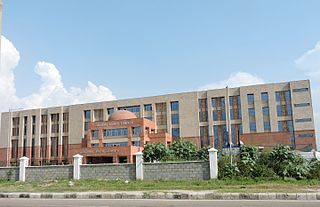
Mohali, officially known as Sahibzada Ajit Singh Nagar, is a planned city in the Mohali district in Punjab, India, which is an administrative and a commercial hub lying south-west of Chandigarh. It is the headquarters of the Mohali district and one of the six Municipal Corporations of the State. It is officially named after Sahibzada Ajit Singh, the eldest son of Guru Gobind Singh.
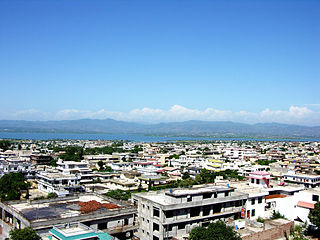
Mirpur, officially known as New Mirpur City, is the capital of Mirpur district located in Azad Kashmir, Pakistan which has been subject of the larger Kashmir dispute between Pakistan and India since 1947. It is the second largest city of Azad Kashmir and the 74th largest city in Pakistan.

Mansa district is a district in the state of Punjab, India. The district headquarters is Mansa city. Mansa district was formed on 13 April 1992 from the erst while district of Bathinda. The district has three tehsils: Mansa, Budhlada and Sardulgarh; and five development blocks: Mansa, Budhlada, Sardulgarh, Bhikhi and Jhunir.

The Sikh Empire was a regional power based in the Punjab region of the Indian subcontinent. It existed from 1799, when Maharaja Ranjit Singh captured Lahore, to 1849, when it was defeated and conquered by the British East India Company in the Second Anglo-Sikh War. It was forged on the foundations of the Khalsa from a collection of autonomous misls. At its peak in the 19th century, the empire extended from Gilgit and Tibet in the north to the deserts of Sindh in the south and from the Khyber Pass in the west to the Sutlej in the east as far as Oudh. It was divided into four provinces: Lahore, which became the Sikh capital; Multan; Peshawar; and Kashmir from 1799 to 1849. Religiously diverse, with an estimated population of 4.5 million in 1831, it was the last major region of the Indian subcontinent to be annexed by the British Empire.
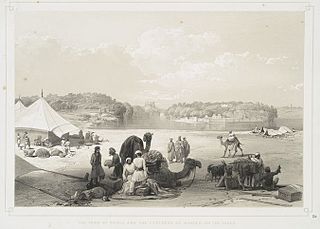
Arora is a community of Punjab, comprising both Hindus and Sikhs. The name is derived from their native place Aror. In 712, the Arora people left Aror and started to settle in the cities of Punjab.
Jat Sikh are an ethnoreligious group and a subgroup of the Jat people and the Sikh religious group from the Indian subcontinent. They are one of the dominant communities in the Punjab, owing to their large land holdings.
The economy of Punjab is the 16th largest state economy in India with ₹5.41 lakh crore (US$68 billion) (FY2020-21) in gross domestic product and a per capita GDP of US$2360(180,000) ranking 19th amongst Indian states.

The Green Revolution was a period that began in the 1960s during which agriculture in India was converted into a modern industrial system by the adoption of technology, such as the use of high yielding variety (HYV) seeds, mechanised farm tools, irrigation facilities, pesticides, and fertilizers. Mainly led by agricultural scientist M. S. Swaminathan in India, this period was part of the larger Green Revolution endeavor initiated by Norman Borlaug, which leveraged agricultural research and technology to increase agricultural productivity in the developing world. Varieties or strains of crops can be selected by breeding for various useful characteristics such as disease resistance, response to fertilizers, product quality and high yields.
Rurka Kalan is a village in the Tehsil Phillaur, Jalandhar, Punjab, India. Khurd and Kalan Persian language word which means small and Big respectively when two villages have same name then it is distinguished as Kalan means Big and Khurd means Small with Village Name.

Punjab, historically known as Panchanada or Pentapotamia, is a state in northern India. Forming part of the larger Punjab region of the Indian subcontinent, the state is bordered by the Indian states of Himachal Pradesh to the north and northeast, Haryana to the south and southeast, and Rajasthan to the southwest; by the Indian union territories of Chandigarh to the east and Jammu and Kashmir to the north. It shares an international border with Punjab, a province of Pakistan to the west. The state covers an area of 50,362 square kilometres, which is 1.53% of India's total geographical area, making it the 19th-largest Indian state by area out of 28 Indian states. With over 27 million inhabitants, Punjab is the 16th-largest Indian state by population, comprising 23 districts. Punjabi, written in the Gurmukhi script, is the most widely spoken and the official language of the state. The main ethnic group are the Punjabis, with Sikhs (57.7%) and Hindus (38.5%) forming the dominant religious groups. The state capital, Chandigarh, is a union territory and also the capital of the neighbouring state of Haryana. Three tributaries of the Indus River — the Sutlej, Beas, and Ravi — flow through Punjab.
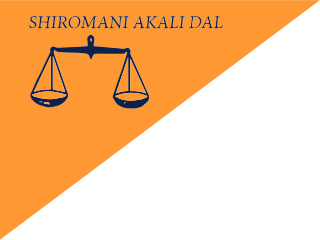
The Shiromani Akali Dal (SAD) is a centre-right Sikh-centric state political party in Punjab, India. The party is the second-oldest in India, after Congress, being founded in 1920. Although there are many parties with the description Akali Dal, the party that is recognized as "Shiromani Akali Dal" by the Election Commission of India is the one led by Sukhbir Singh Badal. The party has a moderate Punjabi agenda. On 26 September 2020, they left the NDA over the farm bills.

Jagtar Singh Grewal was an Indian writer, historian, scholar, and a vice-chancellor of the Guru Nanak Dev University (GNDU).
Sucha Singh Gill is an Indian economist of Punjabi origins. His areas of expertise include Development Economics, International Economics and Economy of Punjab.















